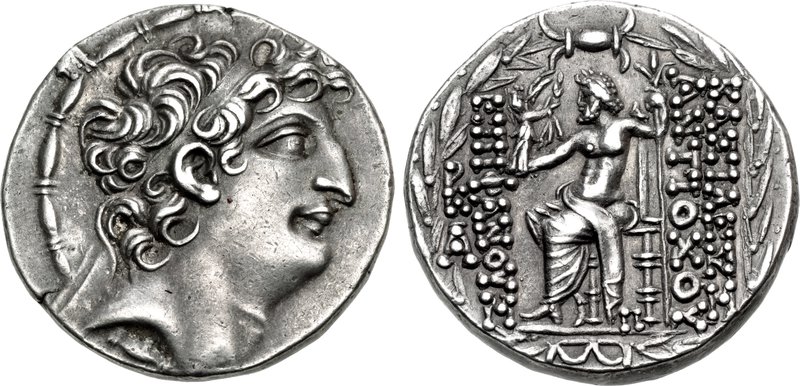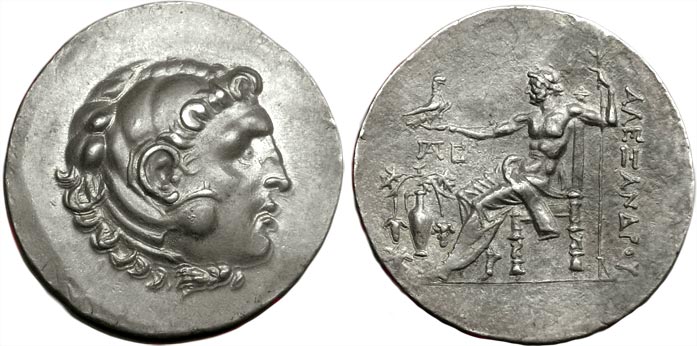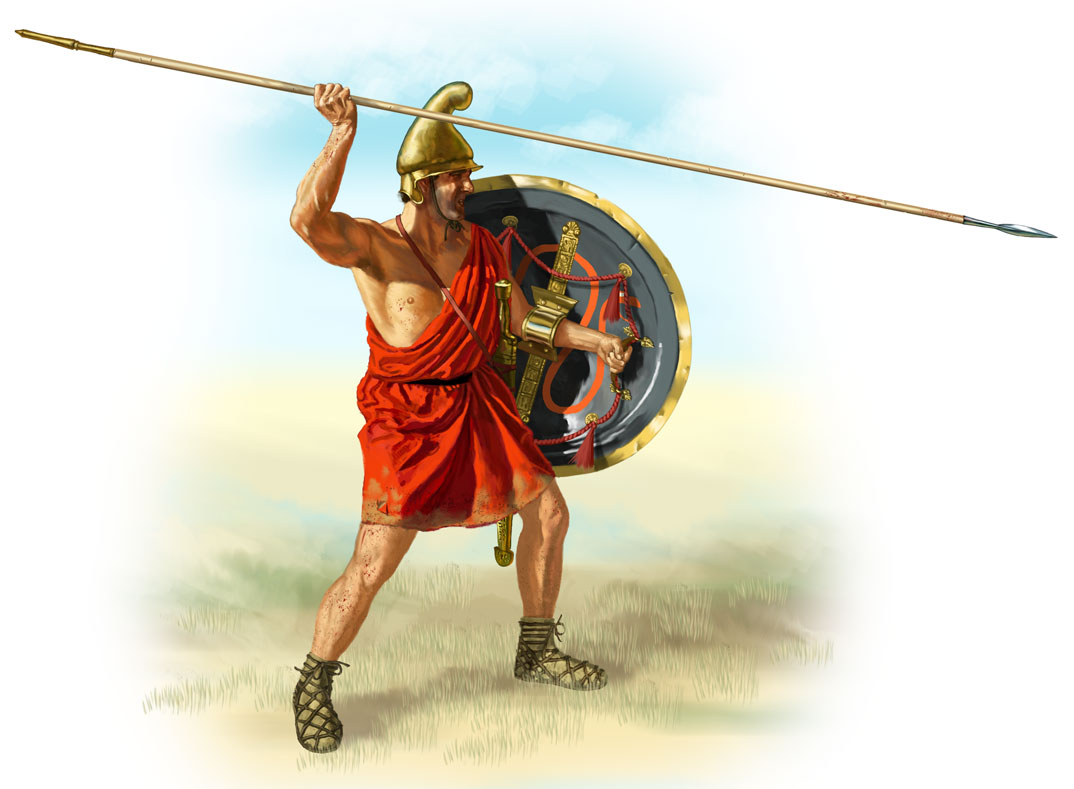|
Antiochus XI Epiphanes
Antiochus XI Epiphanes Philadelphus (; died 93 BC) was a Seleucid Empire, Seleucid monarch who reigned as List of Syrian monarchs, King of Syria between 94 and 93 BC, during the Hellenistic period. He was the son of Antiochus VIII Grypus, AntiochusVIII and his wife Tryphaena. AntiochusXI's early life was a time of constant civil war between his father and his uncle Antiochus IX Cyzicenus, AntiochusIX. The conflict ended with the assassination of AntiochusVIII, followed by the establishment of AntiochusIX in Antioch, the capital of Syria. AntiochusVIII's eldest son Seleucus VI Epiphanes, SeleucusVI, in control of western Cilicia, marched against his uncle and had him killed, taking Antioch for himself, only to be expelled from it and driven to his death in 94 BC by AntiochusIX's son Antiochus X Eusebes, AntiochusX. Following the murder of SeleucusVI, AntiochusXI declared himself king jointly with his twin brother Philip I Philadelphus, PhilipI. Dubious ancient accounts, which may b ... [...More Info...] [...Related Items...] OR: [Wikipedia] [Google] [Baidu] |
Tetradrachm
The tetradrachm () was a large silver coin that originated in Ancient Greece. It was nominally equivalent to four drachmae. Over time the tetradrachm effectively became the standard coin of the Antiquity, spreading well beyond the borders of the Greek World. As a result, tetradrachms were minted in vast quantities by various polities in many weight and fineness standards, though the Athens-derived ''Attic standard'' of about 17.2 grams was the most common. Because of their large size, tetradrachms were often used by various states or rulers to advertise themselves or to deliver political messages. Popularity of the tetradrachm outlived the political independence of the Greeks and it remained in wide circulation in the Mediterranean up until Crisis of the Third Century, while debased varieties persisted in India and Central Asia into early Middle Ages. Due to their often high artistic level tetradrachms are eagerly collected in modern times, and well-preserved or rare specimen ... [...More Info...] [...Related Items...] OR: [Wikipedia] [Google] [Baidu] |
Mopsuestia
Mopsuestia ( and Μόψου ''Mopsou'' and Μόψου πόλις and Μόψος; Byzantine Greek: ''Mamista'', ''Manistra'', ''Mampsista''; Arabic: ''al-Maṣṣīṣah''; Armenian: ''Msis'', ''Mises'', ''Mam(u)estia''; modern Yakapınar) is an ancient city in Cilicia Campestris on the Pyramus River (now the Ceyhan River) located approximately east of ancient Antiochia in Cilicia (present-day Adana, southern Turkey). From the city's harbor, the river is navigable to the Mediterranean Sea, a distance of over 40 km (24 mi). The 1879 book ''A Latin Dictionary'', the 1898 book '' Dictionary of Classical Antiquities'', the 1913 ''Catholic Encyclopedia'' and the 1920 ''La Cilicie'' mention that the city at that time was called Missis or Messis, but in 1960 the name changed to Yakapınar. History The founding of this city is attributed to the seer Mopsus, from whom the city also took its name, who lived before the Trojan War, although it is scarcely mentioned before the Ch ... [...More Info...] [...Related Items...] OR: [Wikipedia] [Google] [Baidu] |
Damascus
Damascus ( , ; ) is the capital and List of largest cities in the Levant region by population, largest city of Syria. It is the oldest capital in the world and, according to some, the fourth Holiest sites in Islam, holiest city in Islam. Known colloquially in Syria as () and dubbed, poetically, the "City of Jasmine" ( ), Damascus is a major cultural center of the Levant and the Arab world. Situated in southwestern Syria, Damascus is the center of a large metropolitan area. Nestled among the eastern foothills of the Anti-Lebanon mountain range inland from the eastern shore of the Mediterranean on a plateau above sea level, Damascus experiences an arid climate because of the rain shadow effect. The Barada, Barada River flows through Damascus. Damascus is one of the List of oldest continuously inhabited cities, oldest continuously inhabited cities in the world. First settled in the 3rd millennium BC, it was chosen as the capital of the Umayyad Caliphate from 661 to 750. Afte ... [...More Info...] [...Related Items...] OR: [Wikipedia] [Google] [Baidu] |
Cleopatra Selene Of Syria
Cleopatra Selene (; – 69 BC) was the Queen consort of Egypt (Cleopatra Selene or Cleopatra V Selene) from 115 to 102 BC, the Queen consort of Syria from 102 to 92 BC, and the monarch of Syria (Cleopatra II) from 82 to 69 BC. The daughter of Ptolemy VIII Physcon and Cleopatra III of Egypt, Cleopatra Selene was favoured by her mother and became a pawn in Cleopatra III's political manoeuvres. In 115 BC, Cleopatra III forced her son Ptolemy IX to divorce his sister-wife Cleopatra IV, and chose Cleopatra Selene as the new queen consort of Egypt. Tension between the king and his mother grew and ended with his expulsion from Egypt, leaving Cleopatra Selene behind; she probably then married the new king, her other brother Ptolemy X. Following the marriage of the Syrian Seleucid princess Cleopatra I to Ptolemy V of Egypt, dynastic marriages between the two kingdoms became common. In 102 BC, Cleopatra III decided to establish an alliance with her nephew Antiochus VIII of Syria; ... [...More Info...] [...Related Items...] OR: [Wikipedia] [Google] [Baidu] |
Eusebius
Eusebius of Caesarea (30 May AD 339), also known as Eusebius Pamphilius, was a historian of Christianity, exegete, and Christian polemicist from the Roman province of Syria Palaestina. In about AD 314 he became the bishop of Caesarea Maritima. Together with Pamphilus, Eusebius was a scholar of the biblical canon and is regarded as one of the most learned Christians during late antiquity. He wrote the ''Demonstrations of the Gospel'', '' Preparations for the Gospel'' and ''On Discrepancies between the Gospels'', studies of the biblical text. His work '' Onomasticon'' is an early geographical lexicon of places in the Holy Land mentioned in the Bible. As "Father of Church History" (not to be confused with the title of Church Father), he produced the ''Ecclesiastical History'', ''On the Life of Pamphilus'', the ''Chronicle'' and ''On the Martyrs''. He also produced a biographical work on Constantine the Great, the first Christian Roman emperor, who was ''Augustus'' between A ... [...More Info...] [...Related Items...] OR: [Wikipedia] [Google] [Baidu] |
Antiochus XII Dionysus
Antiochus XII Dionysus Epiphanes Philopator Callinicus (; between 124 and 109 BC – 82 BC) was a Hellenistic period, Hellenistic Seleucid Empire, Seleucid monarch who reigned as List of Syrian monarchs, King of Syria between 87 and 82 BC. The youngest son of Antiochus VIII Grypus, Antiochus VIII and, most likely, his Egyptian wife Tryphaena, Antiochus XII lived during a period of civil war between his father and his uncle Antiochus IX Cyzicenus, Antiochus IX, which ended with the assassination of Antiochus VIII in 96 BC. Antiochus XII's four brothers laid claim to the throne, eliminated Antiochus IX as a claimant, and waged war against his heir Antiochus X Eusebes, Antiochus X. By 87 BC, only two claimants remained, both brothers of Antiochus XII: Demetrius III Eucaerus, Demetrius III and Philip I Philadelphus, Philip I. The realm of Demetrius III was initially centered in Damascus but later extended over most of Syria. Demetrius III was defeated by Philip I and went into exile ... [...More Info...] [...Related Items...] OR: [Wikipedia] [Google] [Baidu] |
Ptolemaic Dynasty
The Ptolemaic dynasty (; , ''Ptolemaioi''), also known as the Lagid dynasty (, ''Lagidai''; after Ptolemy I's father, Lagus), was a Macedonian Greek royal house which ruled the Ptolemaic Kingdom in Ancient Egypt during the Hellenistic period. Reigning for 275 years, the Ptolemaic was the longest and last dynasty of ancient Egypt from 305 BC until its incorporation into the Roman Republic in 30 BC. Ptolemy, a general and one of the '' somatophylakes'' (bodyguard companions) of Alexander the Great, was appointed satrap of Egypt after Alexander's death in 323 BC. In 305 BC he declared himself Pharaoh Ptolemy I, later known as ''Sōter'' "Saviour". The Egyptians soon accepted the Ptolemies as the successors to the pharaohs of independent Egypt. The new dynasty showed respect to local traditions and adopted the Egyptian titles and iconography, while also preserving their own Greek language and culture. The Ptolemaic period was marked by the intense interactions and blending ... [...More Info...] [...Related Items...] OR: [Wikipedia] [Google] [Baidu] |
Seleucus I Nicator
Seleucus I Nicator (; Ancient Greek, Greek: Σέλευκος Νικάτωρ, ''Séleukos Nikátōr'', "Seleucus the Victorious"; ) was a Ancient Macedonians, Macedonian Greek general, officer and successor of Alexander the Great who went on to found the eponymous Seleucid Empire, led by the Seleucid dynasty. Initially a secondary player in the power struggles following Alexander's death, Seleucus rose to become the total ruler of Asia Minor, Syria (region), Syria, Mesopotamia, and the Iranian plateau, assuming the title of ''basileus'' (king). The Seleucid Empire was one of the major powers of the Hellenistic period, Hellenistic world, until it was overcome by the Roman Republic and Parthian Empire in the late second and early first centuries BC. While serving under Alexander, Seleucus was commander of the ''Hypaspists, Hypaspistai,'' an elite Macedonian infantry unit. After the death of Alexander in June 323 BC, Seleucus initially supported Perdiccas, the regent of Alexander's em ... [...More Info...] [...Related Items...] OR: [Wikipedia] [Google] [Baidu] |
Antiochus (father Of Seleucus I Nicator)
Antiochus (Greek: Ἀντίοχος; fl. 4th century BC) was a Macedonian man who lived during the time of Philip II of Macedon (ruled 359-336 BC). He originally came from Orestis, Upper Macedonia (modern-day Kastoria, Greece). Antiochus served as an officer under Philip II, and gained distinction as a military general. Antiochus was from an upper noble family. His father was probably called Seleucus, his brother was called Ptolemy and he probably had a nephew called Seleucus. Antiochus married a Macedonian woman called Laodice and in about 358 BC Laodice gave birth to their son Seleucus I Nicator, who became a general of Alexander the Great and later founded and became the first king of the Seleucid Empire; she also gave birth to their daughter, Didymeia. It was pretended, in consequence of a dream which Laodice had, that the god Apollo was the real father of Seleucus. When Seleucus became king, he founded and named 16 cities in honor of his father, including the Syrian city ... [...More Info...] [...Related Items...] OR: [Wikipedia] [Google] [Baidu] |
Antiochos VIII Epiphanes
Antiochus (Ancient Greek: Ἀντίοχος) is a Greek male personal name, likely meaning "resolute in contention", or "unwavering". It is derived from the two words αντί ("against") and ὄχη ("support"). It was a dynastic name for rulers of the Seleucid Empire, and the kingdom of Commagene. In Jewish historical memory, connected with the Maccabean Revolt and the holiday of Hanukkah, "Antiochus" refers specifically to Antiochus IV Epiphanes. Antiochus may refer to: The Seleucid Empire * Antiochus (father of Seleucus I Nicator) (born 4th century BC), father of Seleucus I Nicator, founder of the Hellenistic Seleucid Empire * Antiochus I Soter (died 261 BC), king of the Seleucid Empire * Antiochus II Theos (286–246 BC), king of the Seleucid Empire who reigned 261–246 BC * Antiochus Hierax (died 226 BC), rebel brother of Seleucus II Callinicus * Antiochus III the Great (241–187 BC, king 222–187 BC), younger son of Seleucus II Callinicus, became the 6th ruler of the S ... [...More Info...] [...Related Items...] OR: [Wikipedia] [Google] [Baidu] |
Orontes River
The Orontes (; from Ancient Greek , ) or Nahr al-ʿĀṣī, or simply Asi (, ; ) is a long river in Western Asia that begins in Lebanon, flowing northwards through Syria before entering the Mediterranean Sea near Samandağ in Hatay Province, Turkey. As the chief river of the northern Levant, the Orontes has been the site of many major battles including the Battle of Kadesh (13th century BCE), and water distribution remains a controversial issue between the countries in the region. Among the most important cities on the river are Homs, Hama, Jisr al-Shughur, and Antakya (the ancient Antioch, which was also known as "Antioch on the Orontes"). Names In the 9th century BCE, the ancient Assyrian people, Assyrians referred to the river as Arantu, and the nearby Egyptians called it Araunti. The etymology of the name is unknown, yet some sources indicate that it might be derived from ''Arnt'' which means "lioness" in Syriac languages; others called it ''Alimas'', a "water goddess" in Ara ... [...More Info...] [...Related Items...] OR: [Wikipedia] [Google] [Baidu] |








